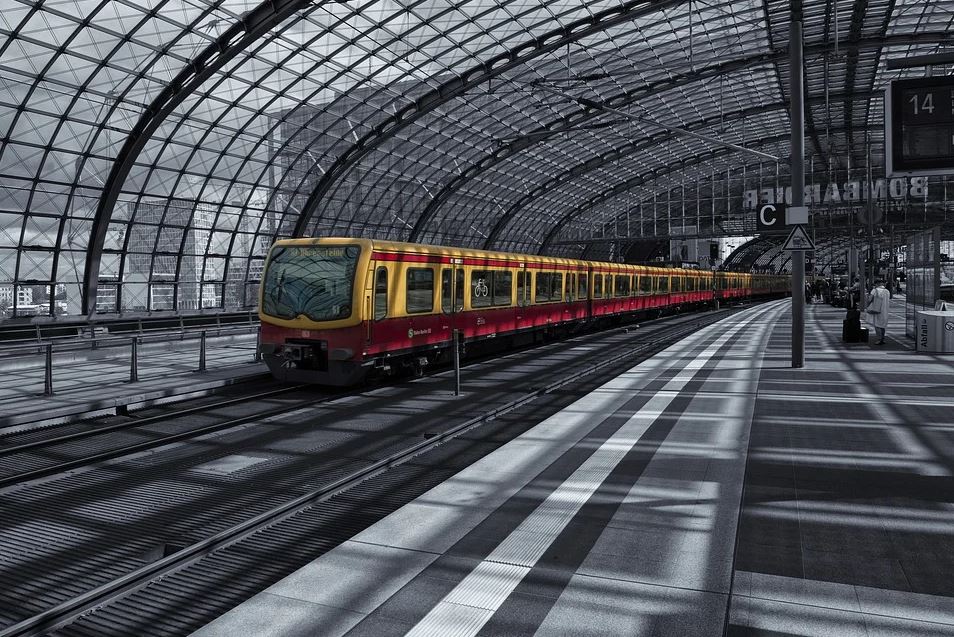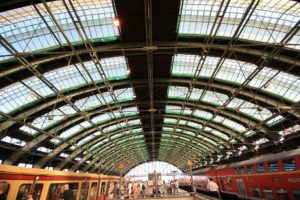Die Infrastrukturthemen spielen in dieser Woche eine große Rolle auf ENTWICKLUNGSSTADT. Bereits am Dienstag berichteten wir über die aktuelle Diskussion, welche U-Bahnverlängerung Berlin zukünftig brauchen wird. Und in unserem gestrigen Artikel zum zukünftigen Stadtquartier im „Haus der Statistik“ haben wir ein weiteres Projekt vorgestellt, welches vollkommen autofrei geplant wird.
Auch im heutigen Beitrag spielt das Auto eine untergeordnete Rolle, bzw. gar keine. Denn es geht um die aktuell laufende Ausschreibung des Betriebes mehrerer Berliner S-Bahnlinien sowie um die Anschaffung neuer Züge. Es ist ein Milliardenprojekt, um welches sich mehrere Firmen bewerben.
Internationales Ausschreibungsverfahren
Welches Unternehmen die übernächste S-Bahn-Generation bauen und betreiben wird, ermittelt der Berliner Senat also im beschriebenen Ausschreibungsverfahren, welches nicht unumstritten ist. Gesucht werden Unternehmen, die für rund zwei Drittel des Streckennetzes Züge herstellen und diese dann betreiben.
Insgesamt elf S-Bahn-Linien sind in diesem Verfahren inbegriffen, unter anderem die Linien S1, S3, S5 oder S7. Sie führen über die Stadtbahn im Ost-West-Verlauf und in Nord-Süd-Richtung durch Berlin.
Betrieb von ingesamt elf S-Bahnlinien
Anders als bei bisherigen Ausschreibungen müssen die zukünftigen Zugbetreiber nicht ihre eigenen Fahrzeuge mitbringen. Die neuen S-Bahnen, die zwischen 2027 und 2034 geliefert werden sollen, werden dem Land Berlin gehören. Das ist, zumindest für das Land Berlin, ein Novum.
Fest bestellt sind schon heute 1.308 neue Wagen, bis zu 2.160 Wagen könnten es insgesamt einmal werden. Unternehmen wie Siemens, Stadler, Bombardier, Alstom, CAF aus Spanien oder Skoda aus Tschechien bekundeten ihr Interesse.
Neubau von mehr als 1.300 Wagen
Auch die China Railway Rolling Stock Company, kurz CRRC, sowie das Deutsche-Bahn-Unternehmen S-Bahn Berlin GmbH, das bisher das ganze Netz betreibt, gehören zu den Kandidaten. Zuletzt hieß es, dass die Liste um Hitachi aus Japan und MTR aus Hongkong gewachsen sei.
Bis zum 11. Februar mussten die Unternehmen offiziell ihre Teilnahme am Bieterverfahren anmelden. Noch ist nicht bekannt, wer sich am Verfahren beteiligt hat. Im Teilnahmeantrag müssen potenzielle Bewerber Fachkunde und Leistungsfähigkeit nachweisen.
Entscheidung im Oktober 2022
Die Firmen haben auch Referenzen einzureichen, die unter anderem belegen, dass sie mit dem Betrieb elektrischer Züge Erfahrung haben. Wer diese erste Stufe passiert, soll Mitte Dezember 2021 aufgefordert werden, ein verbindliches Angebot abzugeben.
Die Zuschlag-Erteilung ist für den Oktober 2022 auf dem Plan. Schon fünf Jahre darauf, Ende 2027, sollen die ersten Züge den Betrieb auf der Linie S8 aufnehmen. Viel Zeit wird dem neuen Betreiber also nicht bleiben. Weitere Verzögerungen bei der Ausschreibung sollte es demnach idealerweise also auch nicht geben.
Über die zukünftige Anbindung des Hauptbahnhofs an den S-Bahnring lest Ihr hier mehr.
Hier könnt Ihr mehr erfahren über mögliche U-Bahnverlängerungen in Berlin.
Infrastructure topics play a big role on ENTWICKLUNGSSTADT this week. Already on Tuesday we reported on the current discussion about which subway extension Berlin will need in the future. And in yesterday’s article on the future city quarter in the „House of Statistics“, we presented another project that is planned to be completely car-free.
In today’s article, too, the car plays a subordinate role, or rather none at all. This is because it is about the current tender for the operation of several Berlin S-Bahn lines and the purchase of new trains. It is a project worth billions, for which several companies are bidding.
INTERNATIONAL BIDDING PROCESS
The Berlin Senate is therefore determining which company will build and operate the next but one generation of S-Bahn trains in the bidding process described above, which is not without controversy. The search is on for companies that will build trains for around two-thirds of the route network and then operate them.
A total of eleven S-Bahn lines are included in this procedure, including the S1, S3, S5 or S7 lines. They run over the Stadtbahn in an east-west and north-south direction through Berlin.
OPERATION OF A TOTAL OF ELEVEN URBAN RAIL LINES
Unlike in previous tenders, the future train operators do not have to bring their own vehicles. The new S-Bahn trains, to be delivered between 2027 and 2034, will belong to the state of Berlin. This is a first, at least for the state of Berlin.
Firm orders have already been placed for 1,308 new wagons, and there could be up to 2,160 wagons in total at some point. Companies such as Siemens, Stadler, Bombardier, Alstom, CAF from Spain and Skoda from the Czech Republic have expressed their interest.
NEW CONSTRUCTION OF MORE THAN 1,300 wagons
The China Railway Rolling Stock Company, CRRC for short, and the Deutsche Bahn company S-Bahn Berlin GmbH, which until now has operated the entire network, are also among the candidates. Most recently, the list was said to have grown to include Hitachi of Japan and MTR of Hong Kong.
The companies had to officially announce their participation in the bidding process by February 11. It is not yet known who has participated in the process. In the application to participate, potential applicants must demonstrate expertise and capability.
DECISION IN OCTOBER 2022
The companies also have to submit references proving, among other things, that they have experience in operating electric trains. Those passing this first stage are to be invited to submit a binding offer in mid-December 2021.
The award of the contract is on schedule for October 2022. Just five years later, at the end of 2027, the first trains are scheduled to start operating on the S8 line. So the new operator will not have much time left. Ideally, therefore, there should be no further delays in the bidding process.




[…] die bisher behandelten Themen – mögliche Verlängerung von Berlins U-Bahn-Strecken oder die Ausschreibung des S-Bahnbetriebs ab 2027 – ganz konkrete Projektvorhaben sind, ist das heutige Thema eher ein visionärer Blick in […]